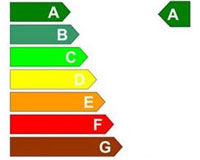 Creating the right sales environment has historically always been synonymous with extensive, and typically inefficient, energy use – from large open doors pumping out heat or air conditioning onto the street, to open fridge units and lights left on for 24 hours a day.
Creating the right sales environment has historically always been synonymous with extensive, and typically inefficient, energy use – from large open doors pumping out heat or air conditioning onto the street, to open fridge units and lights left on for 24 hours a day.
At the same time, the challenges faced by society around energy affordability, security of supply and reducing carbon emissions have become stark.
Retailers, manufacturers and their landlords are increasingly recognising the importance of bringing down their own costs in an increasingly competitive market, and also that their performance across environmental and social indicators is more than ever tied to their overall commercial success.
Consumers are increasingly making choices based not just on the quality of a product but on how businesses are run and the values they stand for. For property owners and occupiers, this means long-term commercial success is intrinsically linked with sustainability. The Carbon Trust estimates that a 20% reduction in energy costs represents about the same as a 5% increase in retail sales.
However, learning lessons from the thinking that is transforming the traditional urban retail offerings and applying it to retail parks is proving challenging.
Units are often poorly insulated, with gaping shop doorways left open and big car parks that tend to be relied upon, rather than public transport.
For the developers and landlords of the next generation of retail parks, the design stage of a scheme offers the opportunity to shape the sustainability of a shopping destination for years to come.
Even so, while it is important to have bold targets, such as BREEAM ratings, and use innovative technology, there has to be a focus on outcomes and the broader sustainability impacts of a building, such as how well it serves the wider needs of its local community. We can have all the technology in place, but without being able to understand how a building is performing, and how retailers engage their customers, we won’t know what might need to change.
Ultimately, we’ve got to be much more “human” in how we approach energy efficiency, which is as much about culture and behaviour as it is about technological innovation.
This can be challenging, as with innovation comes complexity, and it is becoming increasingly clear that buildings will not perform to their potential without an ongoing partnership between property owner and occupier.
Paul Clark is director of investment at The Crown Estate










